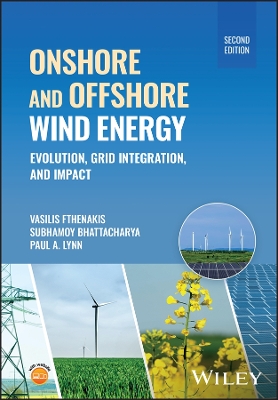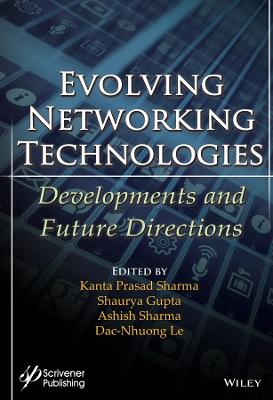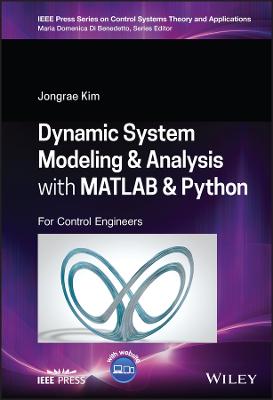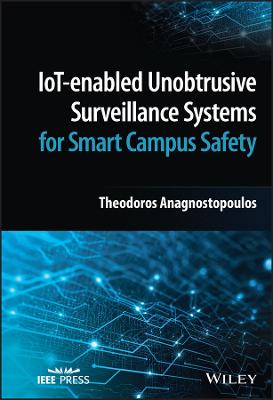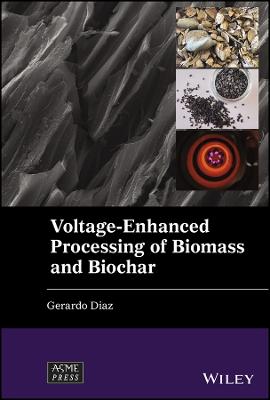Linear and Nonlinear System Modeling
 -10%
portes grátis
-10%
portes grátis
Linear and Nonlinear System Modeling
Roy, Tamal; Tripathi, Suman Lata; Ganguli, Souvik
John Wiley & Sons Inc
10/2024
240
Dura
9781119847427
Pré-lançamento - envio 15 a 20 dias após a sua edição
Descrição não disponível.
Preface xi
1 Assessment of Faults in Hybrid System Connected with Main Grid 1
Aveek Chattopadhyaya, Niladri Mukherjee and Surajit Chattopadhyay
1.1 Introduction 1
1.2 Hybrid System Connected with Main Grid 3
1.3 FFT Results in Different Conditions, Respective Bar Diagram, and Observations 4
1.4 Inter-Harmonic Group Analysis, Results, and Observations 4
1.5 Statistical Parameter Analysis Based on Discrete Wavelet Transform, Results, and Observations 7
1.6 Algorithm to Determine Non-Identical Conditions 9
1.7 Specific Outcome of This Chapter 11
1.8 Conclusions 12
2 Diversified Harmonics Modeling for Power System Stability Analysis 15
Tamal Roy, Debopoma Kar Ray and Surajit Chattopadhyay
2.1 Introduction 15
2.2 Classification 16
2.2.1 Steady-State Stability 16
2.2.2 Transient Stability 16
2.2.3 Dynamic Stability 17
2.3 Power Equation 18
2.4 Maximum Power 19
2.5 Nonlinearity and Harmonics 19
2.6 Active Power, Load Angle, and Reactance 20
2.7 Effects of Harmonics on Stability Model 21
2.7.1 Harmonic Reactance 22
2.7.2 Harmonic Power Equation and Harmonic Maximum Power 23
2.8 Harmonic Operating Point 25
2.8.1 Harmonic Power Versus Load Angle Characteristics 25
2.8.2 Harmonic Operating Point 25
2.8.3 Does HOP Hamper Overall Stability? 25
2.8.4 Importance of HOP 25
2.8.5 Steps for Determination of HOP 26
2.9 Case Studies 26
2.10 Conclusions 30
3 Comparative Study of Different Existing Standard Microgrid Networks 33
Sagnik Datta, Aveek Chattopadhyaya, Surajit Chattopadhyay and Arabinda Das
3.1 Introduction 34
3.2 Classification of Microgrid Networks 34
3.2.1 DC Microgrid Network 35
3.2.2 AC Microgrid Network 35
3.2.3 Hybrid AC/DC Microgrid Network 36
3.3 Modes of Operation 36
3.4 General Equipment of a Microgrid Network 39
3.5 Basic Control Structure of Microgrid Network 41
3.6 Existing Standard Models 41
3.6.1 IEEE 14 Bus Microgrid Network 42
3.6.2 IEEE 9 Bus Microgrid Network 43
3.6.3 IEC 61850-7-420 Standard Microgrid Network 44
3.7 Considerations for Designing of Protection Schemes 45
3.8 Conclusion 45
4 Application of Active Power Filter in the Hybrid Power System to Regulate the Grid Voltage 49
Sarita Samal, Rudranarayan Dash, Arjyadhara Pradhan and Prasanta Kumar Barik
4.1 Introduction 50
4.2 System Topology Description 51
4.2.1 Solar Photovoltaic System 52
4.2.1.1 SPV Modeling 52
4.2.1.2 Maximum Power Point Tracking 52
4.2.1.3 Boost Converter 53
4.2.2 Wind Energy System 53
4.2.3 Modeling of Battery 55
4.2.4 Buck-Boost Converter 57
4.3 Series Active Power Filter Design 58
4.4 Simulation Results 60
4.4.1 Analysis Under Case 1 61
4.4.2 Analysis Under Case 2 61
4.5 Conclusion 64
5 Dynamic Modeling of Drone Control with MATLAB Simulation 67
Suman Lata Tripathi
5.1 Introduction 67
5.2 Tool Description 68
5.3 Methodology 69
5.4 Overview of the Drone Control System 70
5.5 Overview of the Drone Control System in MATLAB Simulink 71
5.5.1 Flight Command 71
5.5.2 Flight Control System 71
5.5.3 Simulation Model 72
5.5.4 Flight Visualization 72
5.5.5 Result and Discussion 72
5.5.6 Varying the Values of Thrust Parameter of the Drone Flight Control 73
5.5.7 Varying the Values of Pitch Parameter of the Drone Flight Control 75
5.5.8 Varying the Values of Roll Parameter of the Drone Flight Control 77
5.5.9 Varying the Values of Yaw Parameter of the Drone Flight Control 80
5.5.10 Varying the Values of Thrust, Pitch, Roll, and Yaw Parameter of the Drone Flight Control 83
5.6 Applications 85
5.7 Conclusion 86
6 Development of New Bioinspired Hybrid Algorithms for Parameter Modeling of Photovoltaic Panels 89
Souvik Ganguli, Shilpy Goyal and Parag Nijhawan
6.1 Introduction 90
6.2 Problem Statement 91
6.3 Proposed Bioinspired Techniques and Methodology 94
6.4 Simulation Results and Discussions 95
6.5 Conclusions 106
7 Power Quality Improvement by Using PV-Integrated DSTATCOM 109
Pushpanjali Shadangi, Sushree Diptimayee Swain and Pravat Kumar Ray
7.1 Introduction 109
7.2 Photovoltaic (PV)-Based DSTATCOM Model 111
7.3 Controller Design and Control Algorithm 113
7.3.1 Instantaneous Reactive Power Theory (IRPT) 113
7.3.2 Modified Instantaneous Reactive Power Theory (MIRPT) 115
7.3.3 Hybrid Synchronous Reference Frame Theory (HSRF) 116
7.3.4 Indirect Current Control (ICC) 118
7.3.5 Direct Current Control (DCC) 119
7.4 Simulation Results 120
7.5 Experimental Results 123
7.6 Conclusion 123
8 Modeling and Simulation of Current Transformer to Study Its Behaviors in Different Conditions 127
Aveek Chattopadhyaya and Surajit Chattopadhyay
8.1 Introduction 127
8.2 Simulation Circuit of Current Transformer 129
8.3 Effects of CT Performance Due to Variation of Circuit Time Constants 130
8.4 Effects of CT Performance Due to Switching Transients 132
8.5 DWT-Based Skewness Analysis for Assessment of CT Saturation Due to Switching Transients 135
8.6 CT Saturation Detection by Multi-Resolution Analysis-Based Notch Assessment 138
8.7 CT Primary Current Assessment During CT Saturation 140
8.8 Conclusion 141
9 Multilevel Inverter-Fed Closed Loop Control and Analysis of Induction Motor Drive 143
Subrat Behera, Ranjeeta Patel, Rudra Narayan Dash and Amit Kumar
9.1 Introduction 144
9.2 Mathematical Modeling 148
9.2.1 Field Weakening Controller 149
9.2.2 Vector Controller 150
9.3 Results 151
9.3.1 Starting Dynamics 151
9.3.2 Reversal Dynamics 153
9.3.3 Load Perturbation Analysis 154
9.3.4 THD Analysis 155
9.4 Conclusion 156
10 Hybrid Grey Wolf Optimizer for Modeling and Control of Electric Drives 159
Souvik Ganguli and Prasanta Sarkar
10.1 Background Study 160
10.2 Proposed Approach 163
10.3 Simulation Outcomes and Discussions 164
10.4 Conclusions 169
11 Parameter Estimation of First-Order RC Model of Lithium-Ion Batteries in Electric Vehicles Using Slime Mold Algorithm 173
Ramdutt Arya, Shatrughan Modi and Souvik Ganguli
11.1 Introduction 174
11.2 Brief Overview of the Battery Models 177
11.2.1 Equivalent Circuit Model (ECM) of Li-Ion Battery 178
11.2.2 First-Order RC Equivalent Circuit Model 179
11.2.3 Fitness Function for Optimization 180
11.3 Slime Mold Algorithm (SMA) 181
11.4 Methodology 184
11.5 Simulation Results and Discussions 185
11.6 Conclusions 192
12 Harmonic Distortion-Based Performance Analysis and Fault Diagnosis of Inverter Connected with BLDC Motor Using Starting Transients 197
Surajit Chattopadhyay, Chiranjit Sain, Purnendu Burui, Sk Rased Ali and Soumya Saha
12.1 Introduction 198
12.2 Modeling 201
12.3 THD Comparison of Phase Currents of Different Inverters 203
12.4 Variation of Harmonic Distortion of IGBT Inverter During Fault 207
12.5 Variation of Harmonic Distortion of MOSFET Inverter During Fault 208
12.6 Variation of Harmonic Distortion of Ideal Switch Inverter During Fault 209
12.7 Conclusion 210
References 210
About the Editors 215
Index 217
1 Assessment of Faults in Hybrid System Connected with Main Grid 1
Aveek Chattopadhyaya, Niladri Mukherjee and Surajit Chattopadhyay
1.1 Introduction 1
1.2 Hybrid System Connected with Main Grid 3
1.3 FFT Results in Different Conditions, Respective Bar Diagram, and Observations 4
1.4 Inter-Harmonic Group Analysis, Results, and Observations 4
1.5 Statistical Parameter Analysis Based on Discrete Wavelet Transform, Results, and Observations 7
1.6 Algorithm to Determine Non-Identical Conditions 9
1.7 Specific Outcome of This Chapter 11
1.8 Conclusions 12
2 Diversified Harmonics Modeling for Power System Stability Analysis 15
Tamal Roy, Debopoma Kar Ray and Surajit Chattopadhyay
2.1 Introduction 15
2.2 Classification 16
2.2.1 Steady-State Stability 16
2.2.2 Transient Stability 16
2.2.3 Dynamic Stability 17
2.3 Power Equation 18
2.4 Maximum Power 19
2.5 Nonlinearity and Harmonics 19
2.6 Active Power, Load Angle, and Reactance 20
2.7 Effects of Harmonics on Stability Model 21
2.7.1 Harmonic Reactance 22
2.7.2 Harmonic Power Equation and Harmonic Maximum Power 23
2.8 Harmonic Operating Point 25
2.8.1 Harmonic Power Versus Load Angle Characteristics 25
2.8.2 Harmonic Operating Point 25
2.8.3 Does HOP Hamper Overall Stability? 25
2.8.4 Importance of HOP 25
2.8.5 Steps for Determination of HOP 26
2.9 Case Studies 26
2.10 Conclusions 30
3 Comparative Study of Different Existing Standard Microgrid Networks 33
Sagnik Datta, Aveek Chattopadhyaya, Surajit Chattopadhyay and Arabinda Das
3.1 Introduction 34
3.2 Classification of Microgrid Networks 34
3.2.1 DC Microgrid Network 35
3.2.2 AC Microgrid Network 35
3.2.3 Hybrid AC/DC Microgrid Network 36
3.3 Modes of Operation 36
3.4 General Equipment of a Microgrid Network 39
3.5 Basic Control Structure of Microgrid Network 41
3.6 Existing Standard Models 41
3.6.1 IEEE 14 Bus Microgrid Network 42
3.6.2 IEEE 9 Bus Microgrid Network 43
3.6.3 IEC 61850-7-420 Standard Microgrid Network 44
3.7 Considerations for Designing of Protection Schemes 45
3.8 Conclusion 45
4 Application of Active Power Filter in the Hybrid Power System to Regulate the Grid Voltage 49
Sarita Samal, Rudranarayan Dash, Arjyadhara Pradhan and Prasanta Kumar Barik
4.1 Introduction 50
4.2 System Topology Description 51
4.2.1 Solar Photovoltaic System 52
4.2.1.1 SPV Modeling 52
4.2.1.2 Maximum Power Point Tracking 52
4.2.1.3 Boost Converter 53
4.2.2 Wind Energy System 53
4.2.3 Modeling of Battery 55
4.2.4 Buck-Boost Converter 57
4.3 Series Active Power Filter Design 58
4.4 Simulation Results 60
4.4.1 Analysis Under Case 1 61
4.4.2 Analysis Under Case 2 61
4.5 Conclusion 64
5 Dynamic Modeling of Drone Control with MATLAB Simulation 67
Suman Lata Tripathi
5.1 Introduction 67
5.2 Tool Description 68
5.3 Methodology 69
5.4 Overview of the Drone Control System 70
5.5 Overview of the Drone Control System in MATLAB Simulink 71
5.5.1 Flight Command 71
5.5.2 Flight Control System 71
5.5.3 Simulation Model 72
5.5.4 Flight Visualization 72
5.5.5 Result and Discussion 72
5.5.6 Varying the Values of Thrust Parameter of the Drone Flight Control 73
5.5.7 Varying the Values of Pitch Parameter of the Drone Flight Control 75
5.5.8 Varying the Values of Roll Parameter of the Drone Flight Control 77
5.5.9 Varying the Values of Yaw Parameter of the Drone Flight Control 80
5.5.10 Varying the Values of Thrust, Pitch, Roll, and Yaw Parameter of the Drone Flight Control 83
5.6 Applications 85
5.7 Conclusion 86
6 Development of New Bioinspired Hybrid Algorithms for Parameter Modeling of Photovoltaic Panels 89
Souvik Ganguli, Shilpy Goyal and Parag Nijhawan
6.1 Introduction 90
6.2 Problem Statement 91
6.3 Proposed Bioinspired Techniques and Methodology 94
6.4 Simulation Results and Discussions 95
6.5 Conclusions 106
7 Power Quality Improvement by Using PV-Integrated DSTATCOM 109
Pushpanjali Shadangi, Sushree Diptimayee Swain and Pravat Kumar Ray
7.1 Introduction 109
7.2 Photovoltaic (PV)-Based DSTATCOM Model 111
7.3 Controller Design and Control Algorithm 113
7.3.1 Instantaneous Reactive Power Theory (IRPT) 113
7.3.2 Modified Instantaneous Reactive Power Theory (MIRPT) 115
7.3.3 Hybrid Synchronous Reference Frame Theory (HSRF) 116
7.3.4 Indirect Current Control (ICC) 118
7.3.5 Direct Current Control (DCC) 119
7.4 Simulation Results 120
7.5 Experimental Results 123
7.6 Conclusion 123
8 Modeling and Simulation of Current Transformer to Study Its Behaviors in Different Conditions 127
Aveek Chattopadhyaya and Surajit Chattopadhyay
8.1 Introduction 127
8.2 Simulation Circuit of Current Transformer 129
8.3 Effects of CT Performance Due to Variation of Circuit Time Constants 130
8.4 Effects of CT Performance Due to Switching Transients 132
8.5 DWT-Based Skewness Analysis for Assessment of CT Saturation Due to Switching Transients 135
8.6 CT Saturation Detection by Multi-Resolution Analysis-Based Notch Assessment 138
8.7 CT Primary Current Assessment During CT Saturation 140
8.8 Conclusion 141
9 Multilevel Inverter-Fed Closed Loop Control and Analysis of Induction Motor Drive 143
Subrat Behera, Ranjeeta Patel, Rudra Narayan Dash and Amit Kumar
9.1 Introduction 144
9.2 Mathematical Modeling 148
9.2.1 Field Weakening Controller 149
9.2.2 Vector Controller 150
9.3 Results 151
9.3.1 Starting Dynamics 151
9.3.2 Reversal Dynamics 153
9.3.3 Load Perturbation Analysis 154
9.3.4 THD Analysis 155
9.4 Conclusion 156
10 Hybrid Grey Wolf Optimizer for Modeling and Control of Electric Drives 159
Souvik Ganguli and Prasanta Sarkar
10.1 Background Study 160
10.2 Proposed Approach 163
10.3 Simulation Outcomes and Discussions 164
10.4 Conclusions 169
11 Parameter Estimation of First-Order RC Model of Lithium-Ion Batteries in Electric Vehicles Using Slime Mold Algorithm 173
Ramdutt Arya, Shatrughan Modi and Souvik Ganguli
11.1 Introduction 174
11.2 Brief Overview of the Battery Models 177
11.2.1 Equivalent Circuit Model (ECM) of Li-Ion Battery 178
11.2.2 First-Order RC Equivalent Circuit Model 179
11.2.3 Fitness Function for Optimization 180
11.3 Slime Mold Algorithm (SMA) 181
11.4 Methodology 184
11.5 Simulation Results and Discussions 185
11.6 Conclusions 192
12 Harmonic Distortion-Based Performance Analysis and Fault Diagnosis of Inverter Connected with BLDC Motor Using Starting Transients 197
Surajit Chattopadhyay, Chiranjit Sain, Purnendu Burui, Sk Rased Ali and Soumya Saha
12.1 Introduction 198
12.2 Modeling 201
12.3 THD Comparison of Phase Currents of Different Inverters 203
12.4 Variation of Harmonic Distortion of IGBT Inverter During Fault 207
12.5 Variation of Harmonic Distortion of MOSFET Inverter During Fault 208
12.6 Variation of Harmonic Distortion of Ideal Switch Inverter During Fault 209
12.7 Conclusion 210
References 210
About the Editors 215
Index 217
Este título pertence ao(s) assunto(s) indicados(s). Para ver outros títulos clique no assunto desejado.
Model order reduction; Time delay systems; Fractional order systems; Unstable systems; Non-minimum phase systems; Interval systems; Chemical process modelling; Nonlinear systems; Linear time-invariant systems; Modelling of power system network; Modelling of power converters; Control systems; Traditional control algorithms; Intelligent control; Single-input single-output systems; Single-input multi-output systems; Multi-input single-output systems; Multi-input multi-output systems; Electronic system modelling; Boiler plant modelling; Nuclear power plant modelling; Hydro plant modelling
Preface xi
1 Assessment of Faults in Hybrid System Connected with Main Grid 1
Aveek Chattopadhyaya, Niladri Mukherjee and Surajit Chattopadhyay
1.1 Introduction 1
1.2 Hybrid System Connected with Main Grid 3
1.3 FFT Results in Different Conditions, Respective Bar Diagram, and Observations 4
1.4 Inter-Harmonic Group Analysis, Results, and Observations 4
1.5 Statistical Parameter Analysis Based on Discrete Wavelet Transform, Results, and Observations 7
1.6 Algorithm to Determine Non-Identical Conditions 9
1.7 Specific Outcome of This Chapter 11
1.8 Conclusions 12
2 Diversified Harmonics Modeling for Power System Stability Analysis 15
Tamal Roy, Debopoma Kar Ray and Surajit Chattopadhyay
2.1 Introduction 15
2.2 Classification 16
2.2.1 Steady-State Stability 16
2.2.2 Transient Stability 16
2.2.3 Dynamic Stability 17
2.3 Power Equation 18
2.4 Maximum Power 19
2.5 Nonlinearity and Harmonics 19
2.6 Active Power, Load Angle, and Reactance 20
2.7 Effects of Harmonics on Stability Model 21
2.7.1 Harmonic Reactance 22
2.7.2 Harmonic Power Equation and Harmonic Maximum Power 23
2.8 Harmonic Operating Point 25
2.8.1 Harmonic Power Versus Load Angle Characteristics 25
2.8.2 Harmonic Operating Point 25
2.8.3 Does HOP Hamper Overall Stability? 25
2.8.4 Importance of HOP 25
2.8.5 Steps for Determination of HOP 26
2.9 Case Studies 26
2.10 Conclusions 30
3 Comparative Study of Different Existing Standard Microgrid Networks 33
Sagnik Datta, Aveek Chattopadhyaya, Surajit Chattopadhyay and Arabinda Das
3.1 Introduction 34
3.2 Classification of Microgrid Networks 34
3.2.1 DC Microgrid Network 35
3.2.2 AC Microgrid Network 35
3.2.3 Hybrid AC/DC Microgrid Network 36
3.3 Modes of Operation 36
3.4 General Equipment of a Microgrid Network 39
3.5 Basic Control Structure of Microgrid Network 41
3.6 Existing Standard Models 41
3.6.1 IEEE 14 Bus Microgrid Network 42
3.6.2 IEEE 9 Bus Microgrid Network 43
3.6.3 IEC 61850-7-420 Standard Microgrid Network 44
3.7 Considerations for Designing of Protection Schemes 45
3.8 Conclusion 45
4 Application of Active Power Filter in the Hybrid Power System to Regulate the Grid Voltage 49
Sarita Samal, Rudranarayan Dash, Arjyadhara Pradhan and Prasanta Kumar Barik
4.1 Introduction 50
4.2 System Topology Description 51
4.2.1 Solar Photovoltaic System 52
4.2.1.1 SPV Modeling 52
4.2.1.2 Maximum Power Point Tracking 52
4.2.1.3 Boost Converter 53
4.2.2 Wind Energy System 53
4.2.3 Modeling of Battery 55
4.2.4 Buck-Boost Converter 57
4.3 Series Active Power Filter Design 58
4.4 Simulation Results 60
4.4.1 Analysis Under Case 1 61
4.4.2 Analysis Under Case 2 61
4.5 Conclusion 64
5 Dynamic Modeling of Drone Control with MATLAB Simulation 67
Suman Lata Tripathi
5.1 Introduction 67
5.2 Tool Description 68
5.3 Methodology 69
5.4 Overview of the Drone Control System 70
5.5 Overview of the Drone Control System in MATLAB Simulink 71
5.5.1 Flight Command 71
5.5.2 Flight Control System 71
5.5.3 Simulation Model 72
5.5.4 Flight Visualization 72
5.5.5 Result and Discussion 72
5.5.6 Varying the Values of Thrust Parameter of the Drone Flight Control 73
5.5.7 Varying the Values of Pitch Parameter of the Drone Flight Control 75
5.5.8 Varying the Values of Roll Parameter of the Drone Flight Control 77
5.5.9 Varying the Values of Yaw Parameter of the Drone Flight Control 80
5.5.10 Varying the Values of Thrust, Pitch, Roll, and Yaw Parameter of the Drone Flight Control 83
5.6 Applications 85
5.7 Conclusion 86
6 Development of New Bioinspired Hybrid Algorithms for Parameter Modeling of Photovoltaic Panels 89
Souvik Ganguli, Shilpy Goyal and Parag Nijhawan
6.1 Introduction 90
6.2 Problem Statement 91
6.3 Proposed Bioinspired Techniques and Methodology 94
6.4 Simulation Results and Discussions 95
6.5 Conclusions 106
7 Power Quality Improvement by Using PV-Integrated DSTATCOM 109
Pushpanjali Shadangi, Sushree Diptimayee Swain and Pravat Kumar Ray
7.1 Introduction 109
7.2 Photovoltaic (PV)-Based DSTATCOM Model 111
7.3 Controller Design and Control Algorithm 113
7.3.1 Instantaneous Reactive Power Theory (IRPT) 113
7.3.2 Modified Instantaneous Reactive Power Theory (MIRPT) 115
7.3.3 Hybrid Synchronous Reference Frame Theory (HSRF) 116
7.3.4 Indirect Current Control (ICC) 118
7.3.5 Direct Current Control (DCC) 119
7.4 Simulation Results 120
7.5 Experimental Results 123
7.6 Conclusion 123
8 Modeling and Simulation of Current Transformer to Study Its Behaviors in Different Conditions 127
Aveek Chattopadhyaya and Surajit Chattopadhyay
8.1 Introduction 127
8.2 Simulation Circuit of Current Transformer 129
8.3 Effects of CT Performance Due to Variation of Circuit Time Constants 130
8.4 Effects of CT Performance Due to Switching Transients 132
8.5 DWT-Based Skewness Analysis for Assessment of CT Saturation Due to Switching Transients 135
8.6 CT Saturation Detection by Multi-Resolution Analysis-Based Notch Assessment 138
8.7 CT Primary Current Assessment During CT Saturation 140
8.8 Conclusion 141
9 Multilevel Inverter-Fed Closed Loop Control and Analysis of Induction Motor Drive 143
Subrat Behera, Ranjeeta Patel, Rudra Narayan Dash and Amit Kumar
9.1 Introduction 144
9.2 Mathematical Modeling 148
9.2.1 Field Weakening Controller 149
9.2.2 Vector Controller 150
9.3 Results 151
9.3.1 Starting Dynamics 151
9.3.2 Reversal Dynamics 153
9.3.3 Load Perturbation Analysis 154
9.3.4 THD Analysis 155
9.4 Conclusion 156
10 Hybrid Grey Wolf Optimizer for Modeling and Control of Electric Drives 159
Souvik Ganguli and Prasanta Sarkar
10.1 Background Study 160
10.2 Proposed Approach 163
10.3 Simulation Outcomes and Discussions 164
10.4 Conclusions 169
11 Parameter Estimation of First-Order RC Model of Lithium-Ion Batteries in Electric Vehicles Using Slime Mold Algorithm 173
Ramdutt Arya, Shatrughan Modi and Souvik Ganguli
11.1 Introduction 174
11.2 Brief Overview of the Battery Models 177
11.2.1 Equivalent Circuit Model (ECM) of Li-Ion Battery 178
11.2.2 First-Order RC Equivalent Circuit Model 179
11.2.3 Fitness Function for Optimization 180
11.3 Slime Mold Algorithm (SMA) 181
11.4 Methodology 184
11.5 Simulation Results and Discussions 185
11.6 Conclusions 192
12 Harmonic Distortion-Based Performance Analysis and Fault Diagnosis of Inverter Connected with BLDC Motor Using Starting Transients 197
Surajit Chattopadhyay, Chiranjit Sain, Purnendu Burui, Sk Rased Ali and Soumya Saha
12.1 Introduction 198
12.2 Modeling 201
12.3 THD Comparison of Phase Currents of Different Inverters 203
12.4 Variation of Harmonic Distortion of IGBT Inverter During Fault 207
12.5 Variation of Harmonic Distortion of MOSFET Inverter During Fault 208
12.6 Variation of Harmonic Distortion of Ideal Switch Inverter During Fault 209
12.7 Conclusion 210
References 210
About the Editors 215
Index 217
1 Assessment of Faults in Hybrid System Connected with Main Grid 1
Aveek Chattopadhyaya, Niladri Mukherjee and Surajit Chattopadhyay
1.1 Introduction 1
1.2 Hybrid System Connected with Main Grid 3
1.3 FFT Results in Different Conditions, Respective Bar Diagram, and Observations 4
1.4 Inter-Harmonic Group Analysis, Results, and Observations 4
1.5 Statistical Parameter Analysis Based on Discrete Wavelet Transform, Results, and Observations 7
1.6 Algorithm to Determine Non-Identical Conditions 9
1.7 Specific Outcome of This Chapter 11
1.8 Conclusions 12
2 Diversified Harmonics Modeling for Power System Stability Analysis 15
Tamal Roy, Debopoma Kar Ray and Surajit Chattopadhyay
2.1 Introduction 15
2.2 Classification 16
2.2.1 Steady-State Stability 16
2.2.2 Transient Stability 16
2.2.3 Dynamic Stability 17
2.3 Power Equation 18
2.4 Maximum Power 19
2.5 Nonlinearity and Harmonics 19
2.6 Active Power, Load Angle, and Reactance 20
2.7 Effects of Harmonics on Stability Model 21
2.7.1 Harmonic Reactance 22
2.7.2 Harmonic Power Equation and Harmonic Maximum Power 23
2.8 Harmonic Operating Point 25
2.8.1 Harmonic Power Versus Load Angle Characteristics 25
2.8.2 Harmonic Operating Point 25
2.8.3 Does HOP Hamper Overall Stability? 25
2.8.4 Importance of HOP 25
2.8.5 Steps for Determination of HOP 26
2.9 Case Studies 26
2.10 Conclusions 30
3 Comparative Study of Different Existing Standard Microgrid Networks 33
Sagnik Datta, Aveek Chattopadhyaya, Surajit Chattopadhyay and Arabinda Das
3.1 Introduction 34
3.2 Classification of Microgrid Networks 34
3.2.1 DC Microgrid Network 35
3.2.2 AC Microgrid Network 35
3.2.3 Hybrid AC/DC Microgrid Network 36
3.3 Modes of Operation 36
3.4 General Equipment of a Microgrid Network 39
3.5 Basic Control Structure of Microgrid Network 41
3.6 Existing Standard Models 41
3.6.1 IEEE 14 Bus Microgrid Network 42
3.6.2 IEEE 9 Bus Microgrid Network 43
3.6.3 IEC 61850-7-420 Standard Microgrid Network 44
3.7 Considerations for Designing of Protection Schemes 45
3.8 Conclusion 45
4 Application of Active Power Filter in the Hybrid Power System to Regulate the Grid Voltage 49
Sarita Samal, Rudranarayan Dash, Arjyadhara Pradhan and Prasanta Kumar Barik
4.1 Introduction 50
4.2 System Topology Description 51
4.2.1 Solar Photovoltaic System 52
4.2.1.1 SPV Modeling 52
4.2.1.2 Maximum Power Point Tracking 52
4.2.1.3 Boost Converter 53
4.2.2 Wind Energy System 53
4.2.3 Modeling of Battery 55
4.2.4 Buck-Boost Converter 57
4.3 Series Active Power Filter Design 58
4.4 Simulation Results 60
4.4.1 Analysis Under Case 1 61
4.4.2 Analysis Under Case 2 61
4.5 Conclusion 64
5 Dynamic Modeling of Drone Control with MATLAB Simulation 67
Suman Lata Tripathi
5.1 Introduction 67
5.2 Tool Description 68
5.3 Methodology 69
5.4 Overview of the Drone Control System 70
5.5 Overview of the Drone Control System in MATLAB Simulink 71
5.5.1 Flight Command 71
5.5.2 Flight Control System 71
5.5.3 Simulation Model 72
5.5.4 Flight Visualization 72
5.5.5 Result and Discussion 72
5.5.6 Varying the Values of Thrust Parameter of the Drone Flight Control 73
5.5.7 Varying the Values of Pitch Parameter of the Drone Flight Control 75
5.5.8 Varying the Values of Roll Parameter of the Drone Flight Control 77
5.5.9 Varying the Values of Yaw Parameter of the Drone Flight Control 80
5.5.10 Varying the Values of Thrust, Pitch, Roll, and Yaw Parameter of the Drone Flight Control 83
5.6 Applications 85
5.7 Conclusion 86
6 Development of New Bioinspired Hybrid Algorithms for Parameter Modeling of Photovoltaic Panels 89
Souvik Ganguli, Shilpy Goyal and Parag Nijhawan
6.1 Introduction 90
6.2 Problem Statement 91
6.3 Proposed Bioinspired Techniques and Methodology 94
6.4 Simulation Results and Discussions 95
6.5 Conclusions 106
7 Power Quality Improvement by Using PV-Integrated DSTATCOM 109
Pushpanjali Shadangi, Sushree Diptimayee Swain and Pravat Kumar Ray
7.1 Introduction 109
7.2 Photovoltaic (PV)-Based DSTATCOM Model 111
7.3 Controller Design and Control Algorithm 113
7.3.1 Instantaneous Reactive Power Theory (IRPT) 113
7.3.2 Modified Instantaneous Reactive Power Theory (MIRPT) 115
7.3.3 Hybrid Synchronous Reference Frame Theory (HSRF) 116
7.3.4 Indirect Current Control (ICC) 118
7.3.5 Direct Current Control (DCC) 119
7.4 Simulation Results 120
7.5 Experimental Results 123
7.6 Conclusion 123
8 Modeling and Simulation of Current Transformer to Study Its Behaviors in Different Conditions 127
Aveek Chattopadhyaya and Surajit Chattopadhyay
8.1 Introduction 127
8.2 Simulation Circuit of Current Transformer 129
8.3 Effects of CT Performance Due to Variation of Circuit Time Constants 130
8.4 Effects of CT Performance Due to Switching Transients 132
8.5 DWT-Based Skewness Analysis for Assessment of CT Saturation Due to Switching Transients 135
8.6 CT Saturation Detection by Multi-Resolution Analysis-Based Notch Assessment 138
8.7 CT Primary Current Assessment During CT Saturation 140
8.8 Conclusion 141
9 Multilevel Inverter-Fed Closed Loop Control and Analysis of Induction Motor Drive 143
Subrat Behera, Ranjeeta Patel, Rudra Narayan Dash and Amit Kumar
9.1 Introduction 144
9.2 Mathematical Modeling 148
9.2.1 Field Weakening Controller 149
9.2.2 Vector Controller 150
9.3 Results 151
9.3.1 Starting Dynamics 151
9.3.2 Reversal Dynamics 153
9.3.3 Load Perturbation Analysis 154
9.3.4 THD Analysis 155
9.4 Conclusion 156
10 Hybrid Grey Wolf Optimizer for Modeling and Control of Electric Drives 159
Souvik Ganguli and Prasanta Sarkar
10.1 Background Study 160
10.2 Proposed Approach 163
10.3 Simulation Outcomes and Discussions 164
10.4 Conclusions 169
11 Parameter Estimation of First-Order RC Model of Lithium-Ion Batteries in Electric Vehicles Using Slime Mold Algorithm 173
Ramdutt Arya, Shatrughan Modi and Souvik Ganguli
11.1 Introduction 174
11.2 Brief Overview of the Battery Models 177
11.2.1 Equivalent Circuit Model (ECM) of Li-Ion Battery 178
11.2.2 First-Order RC Equivalent Circuit Model 179
11.2.3 Fitness Function for Optimization 180
11.3 Slime Mold Algorithm (SMA) 181
11.4 Methodology 184
11.5 Simulation Results and Discussions 185
11.6 Conclusions 192
12 Harmonic Distortion-Based Performance Analysis and Fault Diagnosis of Inverter Connected with BLDC Motor Using Starting Transients 197
Surajit Chattopadhyay, Chiranjit Sain, Purnendu Burui, Sk Rased Ali and Soumya Saha
12.1 Introduction 198
12.2 Modeling 201
12.3 THD Comparison of Phase Currents of Different Inverters 203
12.4 Variation of Harmonic Distortion of IGBT Inverter During Fault 207
12.5 Variation of Harmonic Distortion of MOSFET Inverter During Fault 208
12.6 Variation of Harmonic Distortion of Ideal Switch Inverter During Fault 209
12.7 Conclusion 210
References 210
About the Editors 215
Index 217
Este título pertence ao(s) assunto(s) indicados(s). Para ver outros títulos clique no assunto desejado.
Model order reduction; Time delay systems; Fractional order systems; Unstable systems; Non-minimum phase systems; Interval systems; Chemical process modelling; Nonlinear systems; Linear time-invariant systems; Modelling of power system network; Modelling of power converters; Control systems; Traditional control algorithms; Intelligent control; Single-input single-output systems; Single-input multi-output systems; Multi-input single-output systems; Multi-input multi-output systems; Electronic system modelling; Boiler plant modelling; Nuclear power plant modelling; Hydro plant modelling

